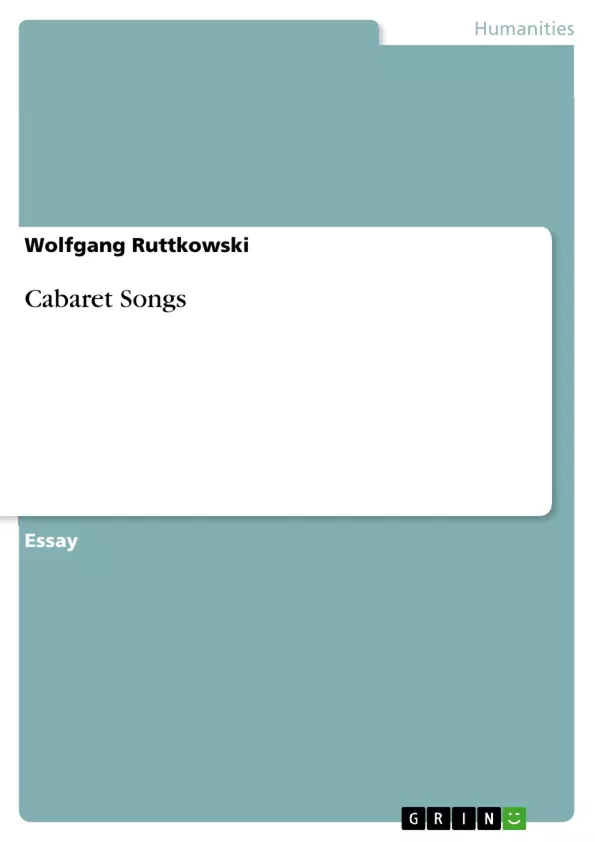Cabaret songs have been in existence for a little more than a cen¬tury, which makes the genre surveyable. The reasons for its former pop¬ularity and recent decline in Europe and for its continued popularity in the USA can be discerned. If, however, we are asked for a precise definition of what a "cabaret song" is - as compared to other kinds of songs¬ e.g., pop songs or jazz songs we soon find ourselves confronted with considerable difficulties. The simplest imaginable answer that a cabaret song is a song performed in a cabaret or nightclub of a certain, originally European, type, is not necessarily true. Cabaret songs can be heard in music halls, in movies and on recordings of all kinds. As we shall see, we aim with the term at a certain style of performance rather than song, even though obviously not every kind of text can be performed as a cabaret song.
Table of Contents
- Two Styles of Presentation
- The Cabaret Audience
- Four Types of Content
- The "Prostitute Song" as the Most Prominent Subgenre of Cabaret Songs
- The "Camp" Style of "Prostitute Songs"
Objectives and Key Themes
This text investigates the genre of cabaret songs, exploring its origins, stylistic evolution, and prominent subgenres. It aims to provide a nuanced understanding of the cabaret song, particularly in relation to its historical context and the distinct styles of presentation that have emerged.
- The evolution of the cabaret song
- The unique styles of presentation in cabaret songs
- The influence of the cabaret audience on the genre
- The prominent subgenres of the cabaret song
- The "camp" style in cabaret songs, particularly in the context of "Prostitute Songs"
Chapter Summaries
- Two Styles of Presentation: This chapter contrasts the distinct performance styles of cabaret singers Yvette Guilbert and Aristide Bruant, emphasizing Guilbert's “rhythme fondu” technique and its impact on the genre. It also discusses the evolution of these styles and their influence on later cabaret singers.
- The Cabaret Audience: This chapter delves into the nature of the cabaret audience, exploring its impact on the development of the genre. It discusses the role of the audience in shaping the content, style, and effectiveness of cabaret songs.
- Four Types of Content: This chapter examines the four main types of content found in cabaret songs, highlighting their unique characteristics and subgenres. It provides insights into the diversity of themes and topics addressed within the cabaret genre.
Keywords
The key words and focus topics of this text include cabaret song, styles of presentation, cabaret audience, subgenres, "Prostitute Song," "camp" style, Yvette Guilbert, Aristide Bruant, "rhythme fondu," and "chanteur" versus "diseur."
- Quote paper
- Dr. Wolfgang Ruttkowski (Author), 2001, Cabaret Songs, Munich, GRIN Verlag, https://www.grin.com/document/82648



